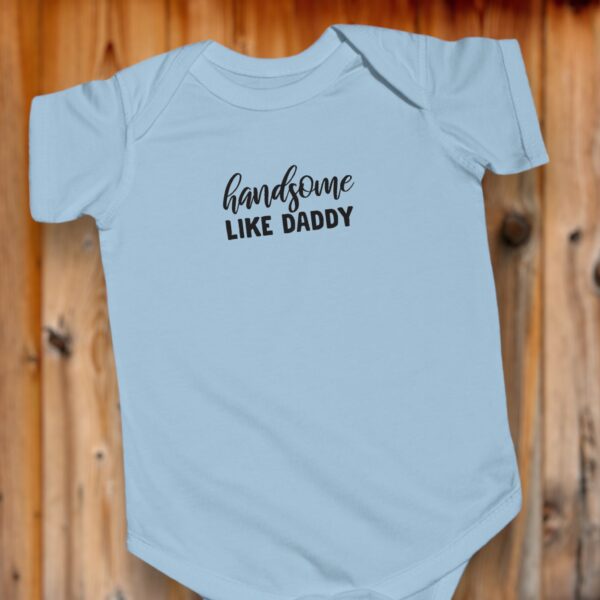In a world where physical appearance often dictates first impressions, many men grapple with body image issues that are rarely discussed in the open. Among these, having large breasts and inverted nipples stands out as a concern that many men silently navigate. This guide, “Embracing Your Chest: A Man’s Guide to Understanding and Managing Large Breasts and Inverted Nipples,” aims to shed light on these conditions, offering insights, solutions, and a message of acceptance. Understanding your body, knowing when and how to seek help, and exploring ways to feel confident in your skin are essential steps on this journey.
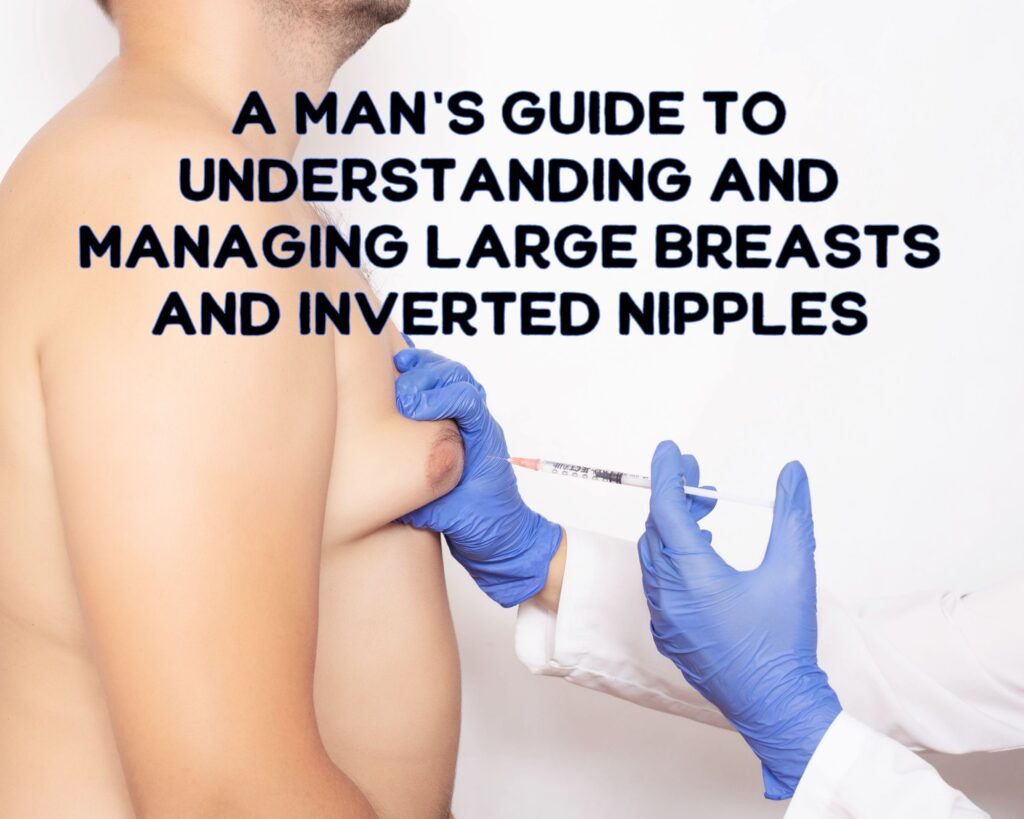
Large breasts in men, medically known as gynecomastia, along with the occurrence of inverted nipples, can stem from a variety of causes ranging from hormonal imbalances to lifestyle factors. While often overlooked, these issues can significantly impact a man’s self-esteem and quality of life. This guide not only explores the “why” behind these physical traits but also delves into both non-surgical and surgical options for those seeking change. Moreover, it emphasizes the importance of internal acceptance and the pursuit of health over societal perfection.
In navigating these waters, understanding the role of lifestyle changes, such as incorporating a fitness routine or adjusting your diet, can be pivotal. For instance, discovering “how to drink apple cider vinegar for weight loss in 1 week” might offer a natural approach to managing body weight and, by extension, breast size. Similarly, integrating the “5 best pre-workout supplements” into your regimen could optimize your workout effectiveness, addressing the root causes of gynecomastia.
Embracing a healthier lifestyle not only involves what you consume but also how you equip yourself for success. For fitness enthusiasts looking for that extra motivation, understanding “why Apple AirPods 2nd Gen are a must-have” can be the key to a focused and productive exercise session. Meanwhile, personal care routines, such as incorporating a “beard roller” for men with beard goals or selecting “top men’s colognes that drive success and attraction,” contribute significantly to one’s self-perception and societal presentation.
Addressing body concerns extends beyond aesthetics, touching on health and wellness aspects. The “struggle with excessive sweating for men” is a related issue that underscores the need for a holistic approach to body confidence and health. This guide is crafted to navigate the physical, emotional, and psychological facets of dealing with large breasts and inverted nipples, encouraging men to seek personalized solutions while fostering self-acceptance and body positivity.
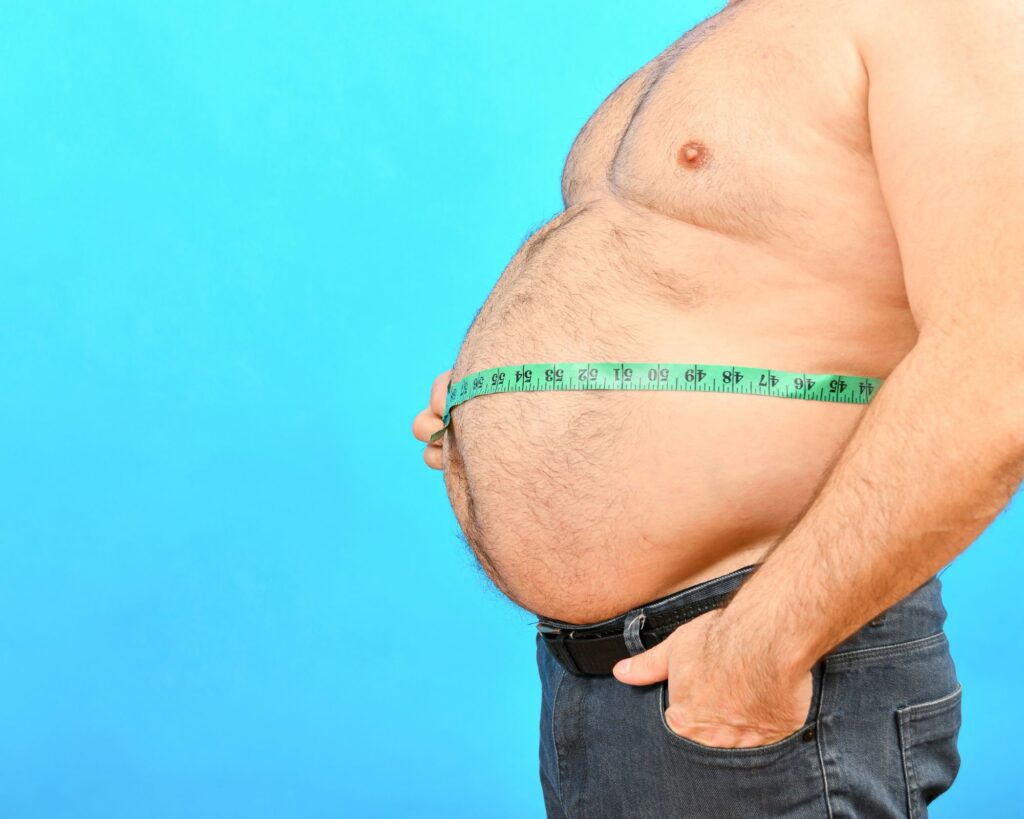
Understanding the Why: Large Breasts in Men
The presence of large breasts in men, a condition commonly referred to as gynecomastia, can be a source of discomfort and self-consciousness for many. Understanding the root causes is the first step toward addressing this issue effectively. Gynecomastia results from an imbalance between estrogen and testosterone levels in the male body, leading to the growth of breast tissue. Various factors, including hormonal changes during puberty, aging, certain medications, and health conditions like obesity, can contribute to this imbalance.
Hormonal Imbalances and Genetics
Hormonal fluctuations are a natural part of life, but when they lead to noticeable changes like gynecomastia, they can become a point of concern. Genetics also play a crucial role; some men are simply more predisposed to developing larger breasts due to their family history.
Lifestyle Factors
Lifestyle choices, including diet and exercise, significantly impact body composition. Excess body weight can exacerbate the appearance of large breasts in men, making lifestyle adjustments a critical component of management. Engaging in regular physical activity and maintaining a balanced diet are foundational steps in managing not only one’s weight but also hormonal balance. For those exploring natural weight loss solutions, incorporating apple cider vinegar into your routine might offer additional benefits.
Addressing Weight and Fitness
A targeted approach to fitness can help in managing and potentially reducing the appearance of large breasts. Strength training, particularly exercises that focus on the chest and upper body, can help in toning and reshaping the chest area. Complementing workouts with effective pre-workout supplements may enhance performance and results, aiding in the overall strategy to manage gynecomastia.
Decoding Inverted Nipples
Inverted nipples, which turn inward rather than protruding, are a common concern that can affect men with larger breasts. While often congenital, meaning present from birth, they can also develop due to significant weight fluctuations. Understanding that inverted nipples are a relatively common variation of human anatomy is important for self-acceptance. However, for those who feel discomfort or wish to explore corrective options, consulting with a healthcare professional can provide clarity on the best course of action.
In both managing large breasts and addressing concerns like inverted nipples, the journey towards acceptance and confidence often involves a holistic approach. This encompasses not just physical health but also the tools and accessories that complement an active lifestyle, such as finding the perfect fitness accessories for your workouts. Whether it’s through dietary changes, a dedicated fitness regimen, or exploring surgical options, the goal is to achieve a state of health and comfort that aligns with your personal well-being and self-image.
Exploring Non-Surgical Solutions for Inverted Nipples
For individuals seeking an alternative to surgical intervention for inverted nipples, modern advancements offer promising solutions that are both cost-effective and less invasive. Devices such as electric nipple correctors have emerged as a popular option for gently addressing flat or inverted nipples. These portable, rechargeable devices are designed to provide a non-surgical solution by using suction technology to draw out the nipple, making them a practical choice for those looking for immediate results without the commitment of surgery.
The Convenience and Effectiveness of Nipple Correctors
Nipple correctors utilize a simple yet effective mechanism to address the concern of inverted nipples. By applying a consistent, gentle suction to the nipple area, these devices can encourage the nipple to protrude. This method is especially useful for individuals whose inverted nipples are the result of shorter ducts or other non-permanent conditions. The ease of use and the portability of these devices make them an excellent option for daily use, offering a discreet solution that can be incorporated into your regular routine.
Benefits of Choosing Nipple Correctors
Opting for an electric nipple corrector before considering surgical options comes with several advantages:
- Non-Invasive: Unlike surgical procedures, using a nipple corrector does not require any incisions or recovery time, making it a non-invasive alternative.
- Cost-Effective: This method provides a more affordable solution compared to the financial investment involved in surgical correction.
- Convenience: With the portability of these devices, individuals can use them in the privacy of their own homes, on their schedule.
- Reversible: For those unsure about permanent surgical solutions, nipple correctors offer a reversible option to see if the cosmetic change meets their personal expectations and comfort levels.
Integrating Nipple Correctors into Your Routine
Incorporating the use of a nipple corrector into your daily routine can be a seamless process. For optimal results, consistent use as directed by the manufacturer is recommended. It’s also advisable to consult with a healthcare professional before starting any new treatment to ensure it’s the right choice for your specific situation.
As we continue to embrace the diversity of the human body and seek solutions that enhance our personal comfort and confidence, exploring innovative devices like nipple correctors represents a step forward in the journey of self-acceptance and body positivity.
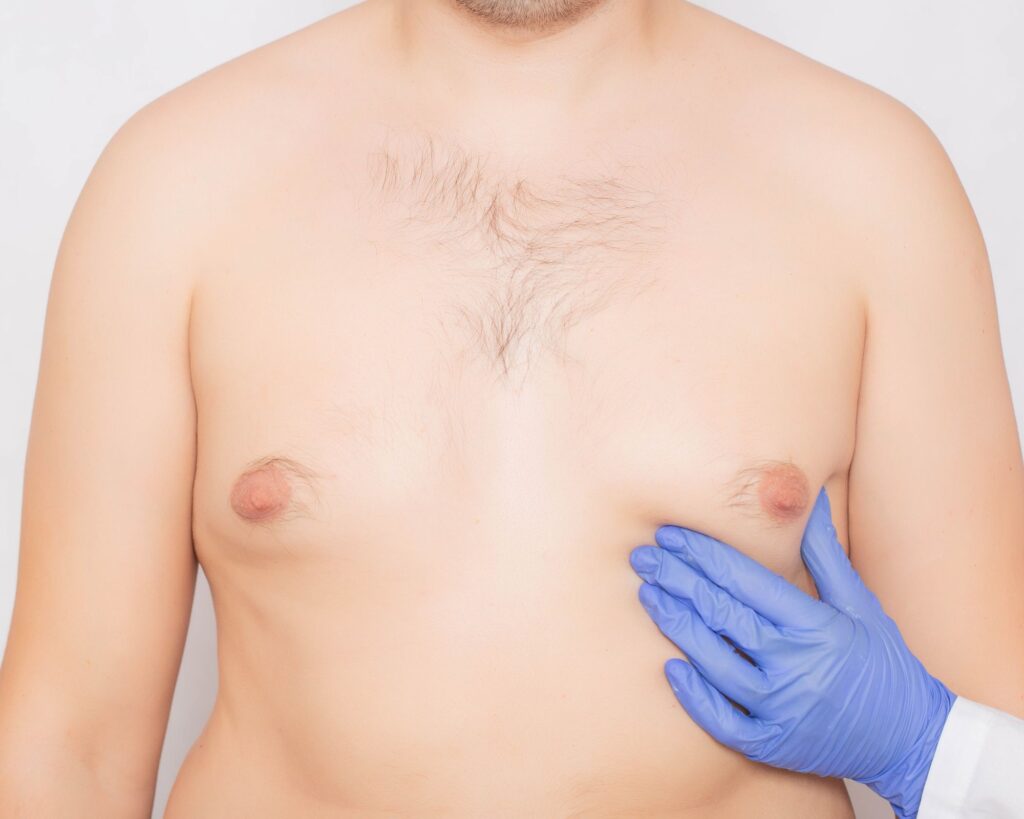
Health Implications and When to See a Doctor
While the physical appearance of large breasts and inverted nipples in men is often the primary concern, it’s crucial to consider the potential health implications behind these conditions. In some cases, they may signal underlying health issues that require medical attention. Understanding when to transition from self-management to seeking professional advice is key to not only improving your physical appearance but ensuring your overall health is not at risk.
Recognizing Signs That Warrant Medical Attention
Gynecomastia, while often benign, can sometimes be a symptom of more serious conditions such as liver disorders, kidney failure, or hormonal imbalances that necessitate medical intervention. Similarly, sudden changes in nipple appearance or breast tissue can occasionally signify an underlying medical concern. If you experience pain, tenderness, or noticeable lumps or swelling in your breast tissue, it’s time to consult with a healthcare provider.
Consulting with Healthcare Professionals
A thorough evaluation by a healthcare professional can help determine the cause of gynecomastia and the best course of action. This may include blood tests to assess hormone levels, imaging tests to inspect breast tissue, or physical exams to evaluate overall health. For those feeling anxious or unsure about taking this step, remember that healthcare providers are there to help and offer solutions tailored to your individual needs.
Non-Surgical Approaches to Managing Large Breasts
Before considering surgical options, there are non-surgical approaches that can effectively manage or reduce the appearance of large breasts in men. These methods focus on addressing the underlying causes of gynecomastia and improving chest aesthetics through lifestyle modifications.
Lifestyle Changes and Weight Management
Implementing a healthy diet and regular exercise regime can significantly impact the size and appearance of large breasts. Focusing on whole foods, reducing calorie intake, and engaging in cardiovascular and strength-training exercises can help reduce overall body fat, including in the chest area. For guidance on incorporating beneficial dietary practices, exploring how to use apple cider vinegar for weight loss can offer a natural method to support your weight loss journey.
Clothing and Compression Garments
Strategically chosen clothing and the use of compression garments can also play a role in managing the appearance of large breasts. Compression shirts designed specifically for gynecomastia can provide an immediate slimming effect, enhancing confidence and comfort in social or professional settings.
Understanding and Exploring Surgical Options
For some men, surgery may be a viable option to achieve their desired chest contour. Procedures such as liposuction, which removes excess fat, or mastectomy, which involves the removal of glandular breast tissue, can offer more permanent solutions. It’s essential to discuss these options with a qualified plastic surgeon who can provide detailed information on the potential risks, benefits, and recovery process associated with each procedure.
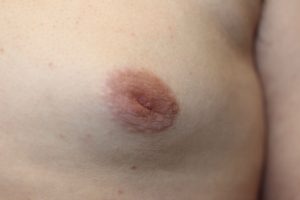
Coping Mechanisms and Emotional Support
Addressing the physical aspects of having large breasts and inverted nipples is only one part of the journey. Equally important is navigating the emotional and psychological impact these conditions can have on men. Society often places a strong emphasis on physical appearance, which can lead to feelings of inadequacy or embarrassment in those who deviate from perceived norms. Developing effective coping mechanisms and seeking emotional support are vital steps in fostering self-acceptance and confidence.
Building Self-Confidence and Self-Acceptance
The path to self-confidence begins with self-acceptance. Recognizing and appreciating your body’s uniqueness is a crucial step. Engage in positive self-talk and remind yourself of your worth beyond physical appearance. Celebrating small achievements in your fitness journey or personal growth can also bolster self-esteem.
Seeking Professional Help
If feelings of distress, anxiety, or depression arise, consulting a mental health professional can provide significant relief and support. Therapy offers a safe space to explore these feelings and develop strategies to manage them effectively. Mental health professionals can also assist in building resilience and coping skills to navigate societal pressures and improve overall well-being.
Finding Support Groups
Connecting with others who share similar experiences can be incredibly comforting and reassuring. Support groups, whether online or in-person, provide a sense of community and understanding that can help mitigate feelings of isolation. Sharing stories, tips, and encouragement with peers can offer new perspectives and coping strategies.
Educating Those Around You
Educating friends, family, and peers about your condition and how it affects you can foster empathy and support from your immediate circle. Open communication can dispel misunderstandings and build stronger, more supportive relationships.
Engaging in Activities That Boost Your Mood
Investing time in hobbies and activities that bring joy and satisfaction can improve mental health and provide a diversion from stressors related to body image. Whether it’s sports, art, music, or any other interest, these activities offer an outlet for expression and relaxation.
Wrapping Up..
Navigating the complexities of living with large breasts and inverted nipples as a man involves addressing both the physical and emotional aspects of the condition. While understanding the medical and lifestyle approaches to managing these characteristics is crucial, fostering emotional resilience and seeking support are equally important. Remember, your value is not defined by your physical appearance but by the richness of your character and the depth of your experiences.
Embracing your chest, whether through acceptance, medical intervention, or a combination of both, is a deeply personal journey that unfolds differently for everyone. By seeking the right support, embracing healthy coping mechanisms, and advocating for your well-being, you can walk this path with confidence and dignity.
As an Amazon Associate we earn from qualifying purchases through some links in our articles.




